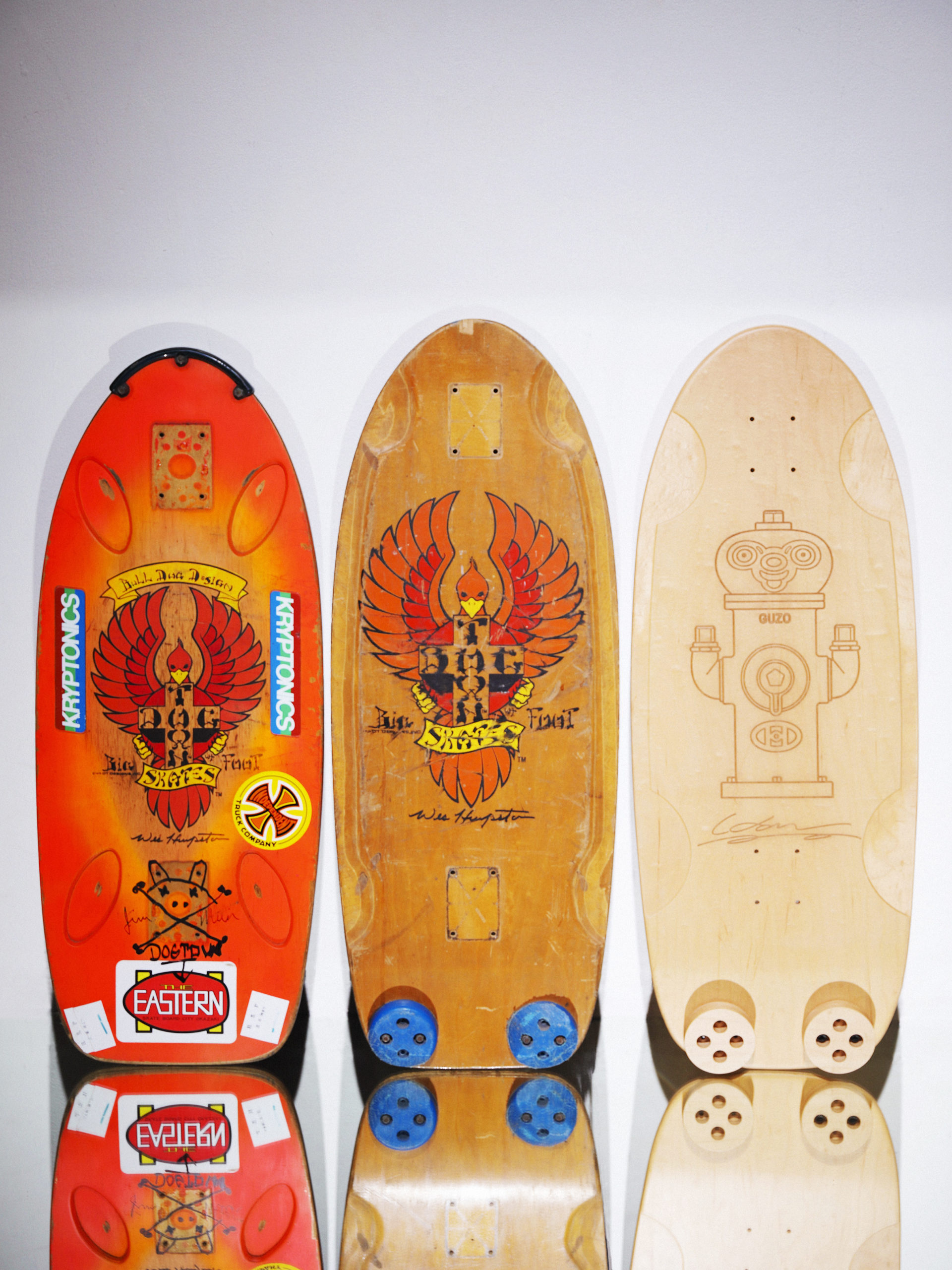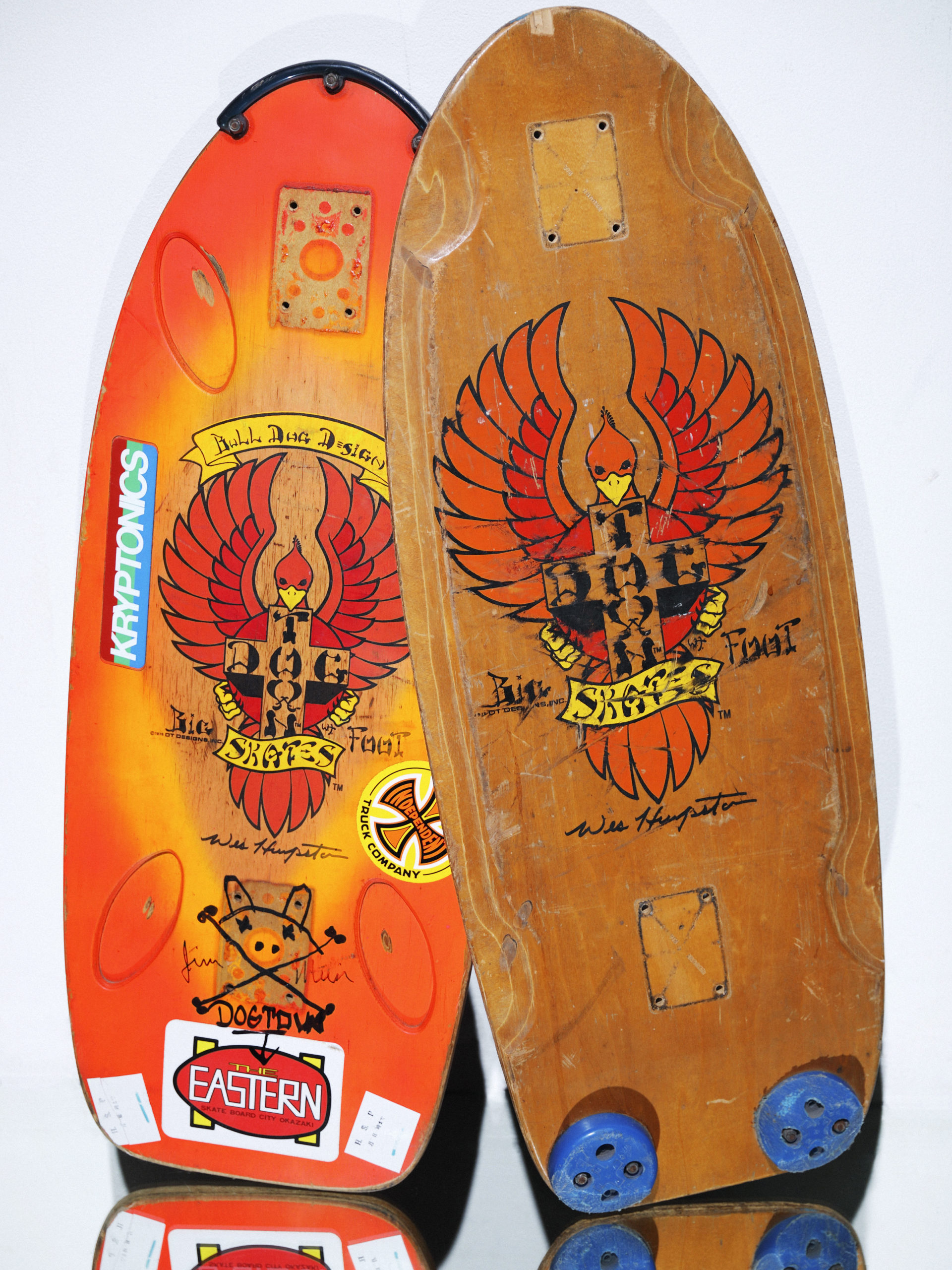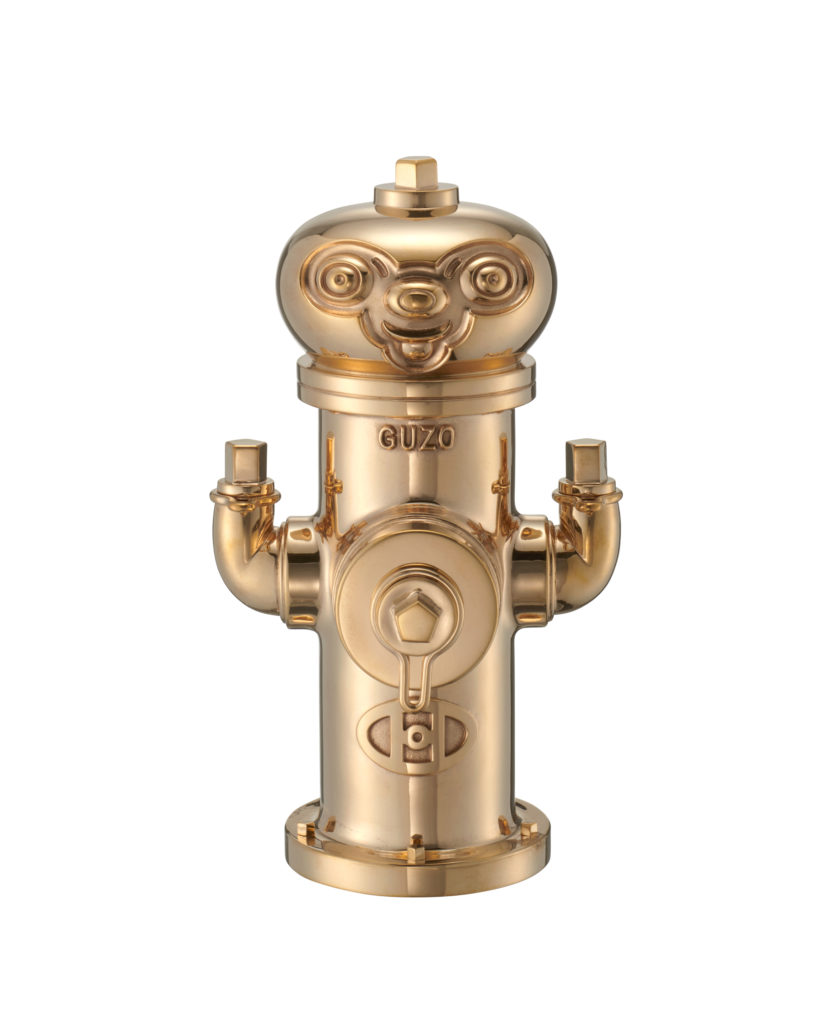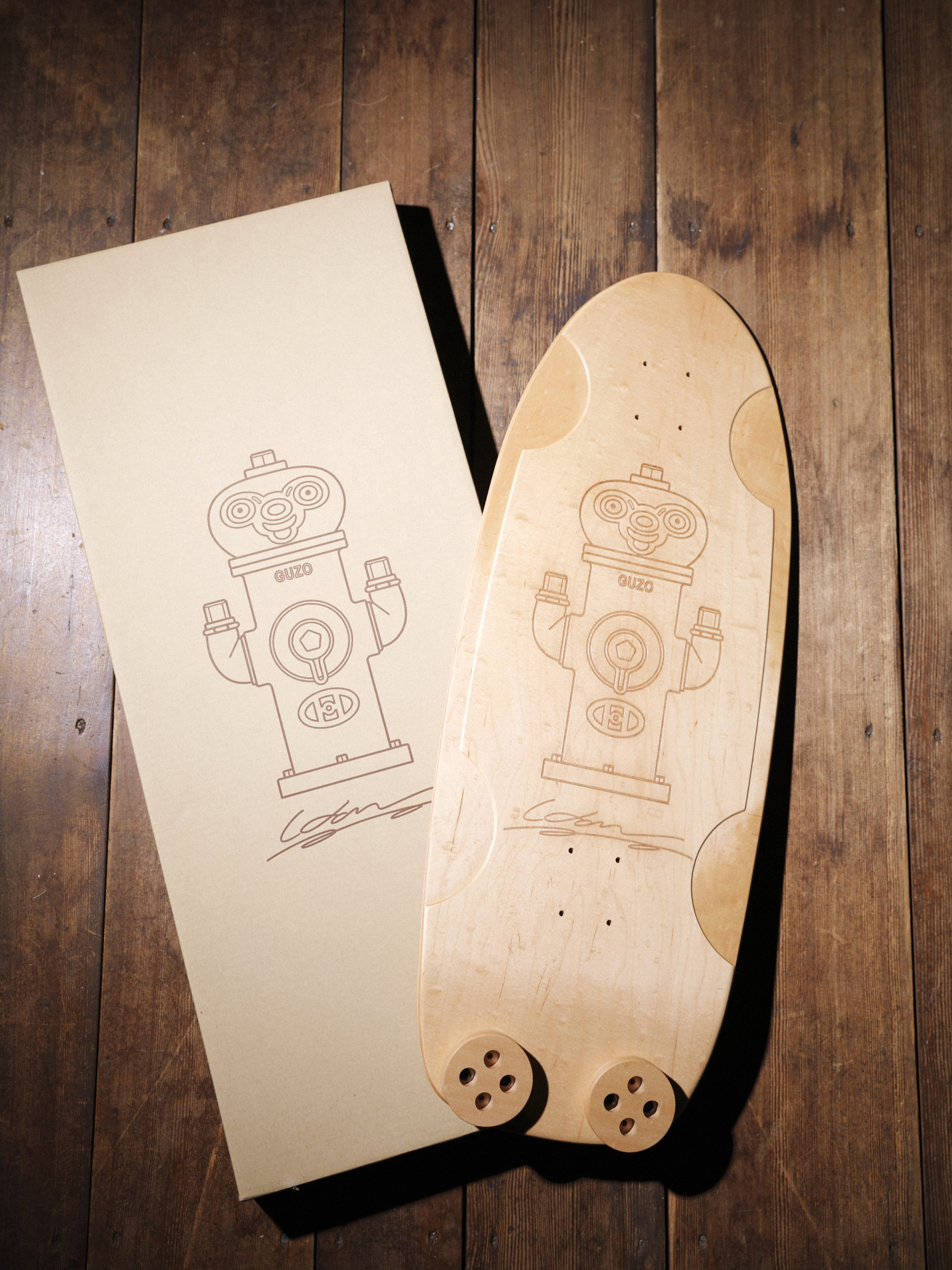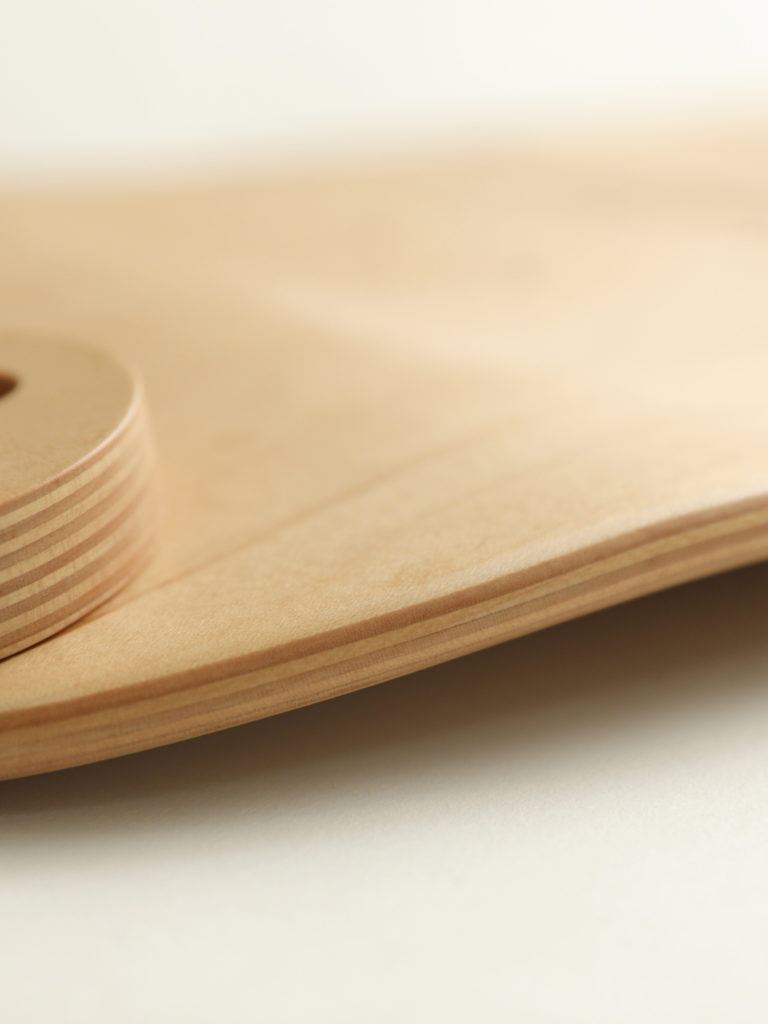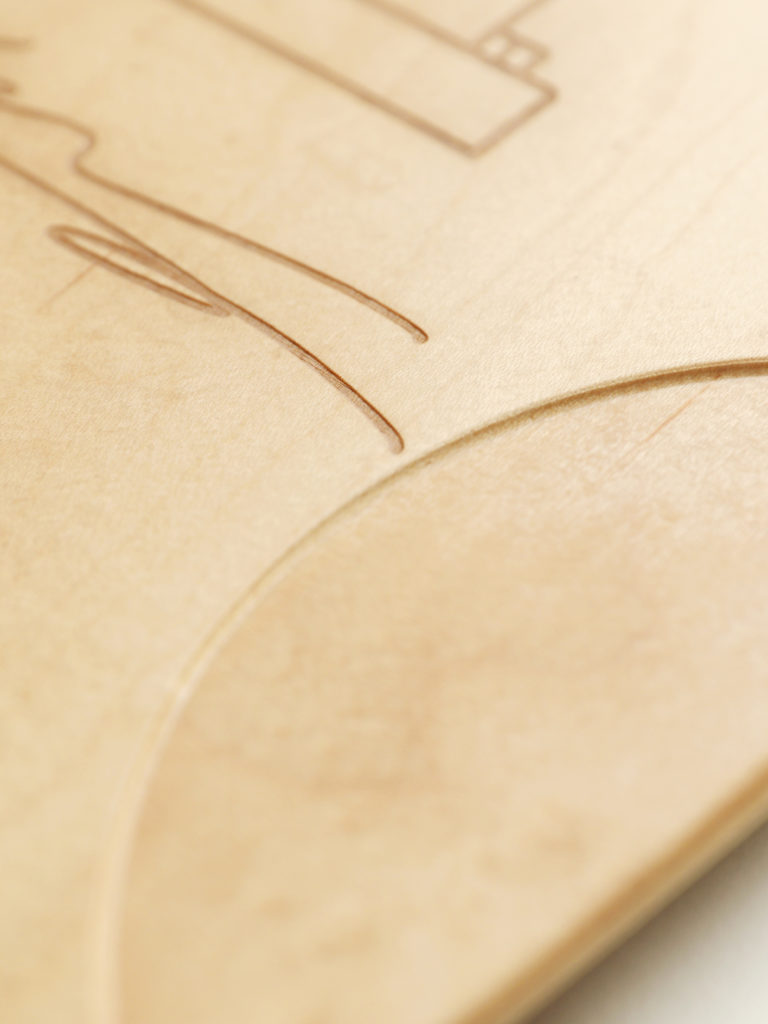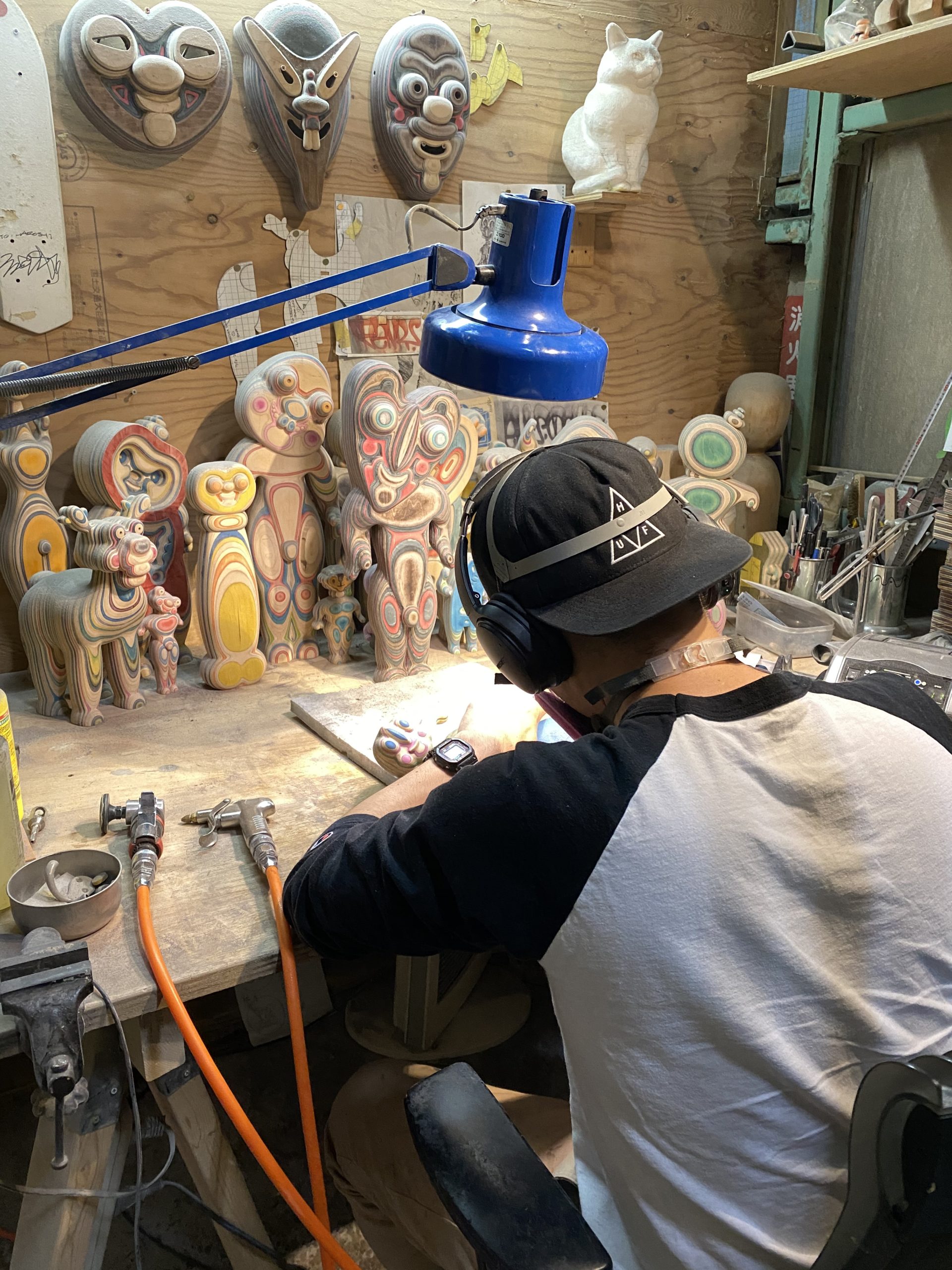Layers of plywood piled up and put into a press adding heat and pressure to form a “molded plywood”—Tendo Mokko is the pioneering brand that brought the technique to Japan, not only to mass produce fine quality furniture but pursuing the beauty of wood crafts. Their distinctively thin yet sturdy molded plywood is an innovation that made possible of complex curves and forms that cannot be achieved normally with natural woods; and has been kindling ingenuity within many esteemed Japanese designers and world-famous architects. The influential brand, Tendo Mokko is now announcing the launch of their new collaboration masterpiece through TOKION—They have partnered with the sculptor extolled in Japan and globally with his skateboard-associated crafts: HAROSHI, it is. We sat down with HAROSHI and asked about his creative ideas imparted to the collaboration, his feelings towards the used skateboard decks, and the essences of the product.
The artist and the artisan. The challenges of the expressionists pursuing the pinnacle of artisanship
“I think it was fifteen or sixteen years ago, I met a person at a skate park using a skateboard from Tendo Mokko. He told me that it was made in Japan, and ever since I’ve been curious about the brand.” (HAROSHI)
HAROSHI told us the story when we asked him about his first impression of Tendo Mokko.
He also mentioned that even before the event, he was already familiar with the brand’s remarkable wood-molding technique as he has been a fan of their butterfly stool designed by Sori Yanagi. His initial thought about this project was though quite skeptical— “Is it even possible to make a perfect skateboard in Japan?” However, he soon perceives that his worries were unnecessary.
Again, we would like you to see the above picture of the three skateboards together. The right one is the latest product. Skateboards have been evolving since it first came out around the 50’s, along the materials and styles from each epoch. The platform of the product adopts the old school shape using the lumber material from the 70’s. But why did HAROSHI choose this classic style—what was his intention?
“Ultimately, I’m fond of the old skateboards, and have been collecting them. When I visited Jim Muir from Dogtown Skateboards to his house, I asked him to teach me how to make decks the way they did back in the 70’s. He then proposed an idea that we should in fact make one together. We worked on it all day starting by carving the organic maple wood boards in the morning, then putting the tail and finishing off with the painting. It was unequivocally the best day of my life.” (HAROSHI)
It was completely dark outside by the time they were done making their handmade skateboard. During the process, HAROSHI was able to hear Muir’s saga about the time when the flat base bottom got dried and bent and naturally formed a concave. His time with Muir gave a significant impact on him to this day.
“I believe that anything new is born in respect to the old things—if you don’t know the origins then you wouldn’t be able to create something new. In the old days, I would ride an old board a bit just to get a feel of it, and when I wanted to really enjoy skating, I would choose a modern skateboard. However, as I’m quite old now, I’ve started seeking fun in merely pushing and letting it run on its own. [Laughs] Recently, trying out different types of old boards and tracks is extremely enjoyable to me.” (HAROSHI)
An artist and a skater enamored of the skateboard culture. To personify HAROSHI’s strong pizazz, the artist and the craftsman—who both pursue the art of expressing through crafting—started off from deciding the base shape of the skateboard.
“First, I had Tendo Mokko to send me their past crafts of normal shaped and pressed decks as a reference. But they were slightly different from what I had in mind. The skill to create a skateboard deck’s concave isn’t something that can be acquired within a day; I thought it would consume an enormous amount of time and money and take forever for the project.” (HAROSHI)
Right when HAROSHI was anguishing, his skateboard collection caught his attention and he realized: “Why don’t we just make a flat-nose single-kick,” and decides “I might as well make something special for myself.”
“The year I was born, 1978, was when many amazing skateboards were created. Out of them all, my favorite is Dogtown Skateboards Bigfoot deck. It’ a whopping twelve-inch-wide board but isn’t like a longboard and doesn’t have a wheelbase; it’s pliable and has this distinctive feel when riding. I took this board as a sample, elaborated a bit, and turned it into an original piece.” (HAROSHI)
HAROSHI FREE HYDRANT CO 2020 bronze
photography Shigeru Tanaka / copyright by Haroshi / courtesy of Nanzuka
The Wood-molding Technique and The Graphics. Turning GUZO from 3D to 2D
Now you know how the platform is made, and next you will be finding out about the graphics that embellishes the board that is used like a canvas. The bronze hydrant that was showcased at HAROSHI’s exhibition—HAROSHI FREE HYDRANT CO held in the summer—is the motif.
“The exhibition happened at the same time that the project was starting, so it was a great timing to make a board using the graphic of F.H.C (FREE HYDRANT CO.) It became definitive to incorporate the motif as it matched well with the tail pad. Initially, I was planning to design like the emboss from G&S (Gordon and Smith—A historic surfboard shop established in 1959 and the precursor of the skateboard culture) Stacey Peralta model, but had to surrendered from the idea as the cost would be exorbitant and we would need to go through countless errors to create one. Eventually, we unanimously agreed to use the laser engraver as it was the most efficient and suitable medium for the project, yet it still took a lot of effort to set and find the ideal depth of the laser etched mark.” (HAROSHI)
*It is made as a decorative object. Please note that riding it as a skateboard may lead to a risk of breaking and injury from falling.
*Limit of one per customer. Your understanding will be much appreciated.
The round part at the tail is the tail pad, which is one of the characteristic details from the old days. The F.H.C hydrant graphic used for this piece represents GUZO (a guardian deity-like figure)—an auspicious symbol of prosperity of descendants—and the two tail pads symbolizes testicles (“golden balls.”) The art is full of skater’s impish humor.
The motive is indeed straightforward—Simply driven by the zest towards skateboard and craftsmanship.
Because of his selection of materials and motifs—composing from pieces of beat-up skateboards and hydrants—the word “savior” is often imparted to the introductions of his works. His approach for the new project seems different this time; however, more than adhering to the habitual pattern, his priority is to simply enjoy crafting.
“I’ve always entailed a method of incorporating recycled materials, but essentially, I just love skateboards and crafting. It was an honor for me to be able to create something with a motif of my all-time inspiration—skateboard—and work closely with the Japanese craftsman. When I first saw the finished result, I concurrently felt the aesthetic of a traditional craft. The quality of the final product is way beyond standard; nothing of a typical skateboard. I really felt bad putting a grip tape on it. [Laughs]” (HAROSHI)
Not to forget, this skate deck is an ornamental art. We are now closing the interview with HAROSHI’s advice and answer to our question of how he would like people to enjoy the art piece.
“The product was made by our strenuous efforts, so I kind of knew that the price would be set quite high, but I was surprised anyway when I saw the actual price. [Laughs] It’s definitely worth it though, because it’s nothing like those atrocious pressed skateboard decks in the market that are unreasonably high priced like 200 dollars, ours’ insanely detailed. It’s of course designed to be rideable. I’ve skated with this deck already, and it was amazing! But only if you have the courage to ride an extremely expensive skateboard, plus, I wouldn’t recommend doing so as it’s fundamentally made as an ornamental art. [Laughs] I will address the parts I added to the deck anyway for your interest: Independent 215 truck and Powell Peralta Mini-Cubic wheels 64mm. As a final note, you should be responsible for your actions…” (HAROSHI)
HAROSHI
A world-renowned artist lauded for his skateboard culture-inspired handcrafted sculptures and art made by stacking skateboards, bonding them into one with an adhesive, and hand carving them. Currently based overseas and known globally from his artwork for the Japanese toy brand Medicom Toy, collaboration with Keith Hufnagel’s brand Huf, and handcrafting the trophy for the pro-skater tournament BATB.
Instagram:@haroshi
Photography Shinpo Kimura
Text Tommy
Translation Ai Kaneda

